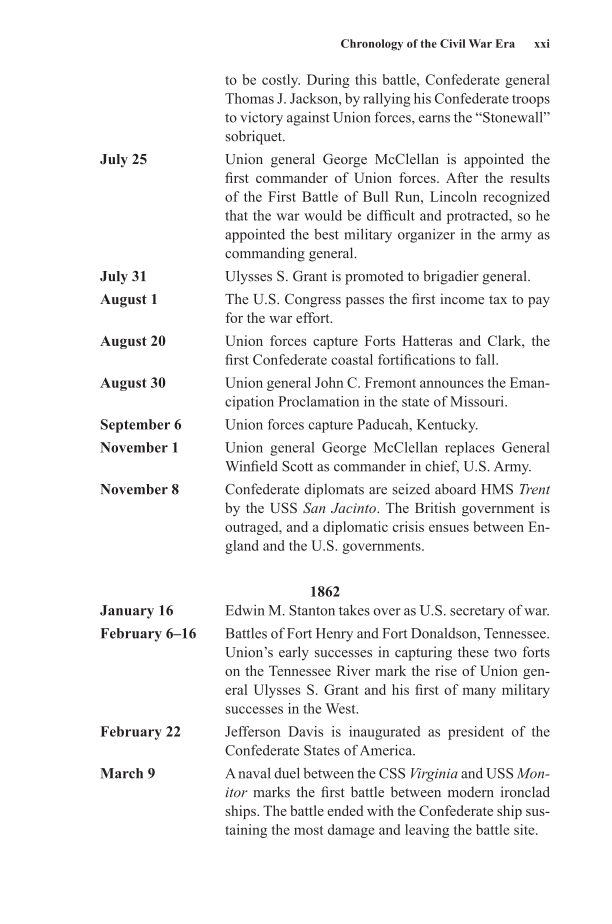Chronology of the Civil War Era xxi to be costly. During this battle, Confederate general Thomas J. Jackson, by rallying his Confederate troops to victory against Union forces, earns the “Stonewall” sobriquet. July 25 Union general George McClellan is appointed the first commander of Union forces. After the results of the First Battle of Bull Run, Lincoln recognized that the war would be difficult and protracted, so he appointed the best military organizer in the army as commanding general. July 31 Ulysses S. Grant is promoted to brigadier general. August 1 The U.S. Congress passes the first income tax to pay for the war effort. August 20 Union forces capture Forts Hatteras and Clark, the first Confederate coastal fortifications to fall. August 30 Union general John C. Fremont announces the Eman- cipation Proclamation in the state of Missouri. September 6 Union forces capture Paducah, Kentucky. November 1 Union general George McClellan replaces General Winfield Scott as commander in chief, U.S. Army. November 8 Confederate diplomats are seized aboard HMS Trent by the USS San Jacinto. The British government is outraged, and a diplomatic crisis ensues between En- gland and the U.S. governments. 1862 January 16 Edwin M. Stanton takes over as U.S. secretary of war. February 6–16 Battles of Fort Henry and Fort Donaldson, Tennessee. Union’s early successes in capturing these two forts on the Tennessee River mark the rise of Union gen- eral Ulysses S. Grant and his first of many military successes in the West. February 22 Jefferson Davis is inaugurated as president of the Confederate States of America. March 9 A naval duel between the CSS Virginia and USS Mon- itor marks the first battle between modern ironclad ships. The battle ended with the Confederate ship sus- taining the most damage and leaving the battle site.
Document Details My Account Print multiple pages
Print
You have printed 0 times in the last 24 hours.
Your print count will reset on at .
You may print 0 more time(s) before then.
You may print a maximum of 0 pages at a time.













































































































































































































































































